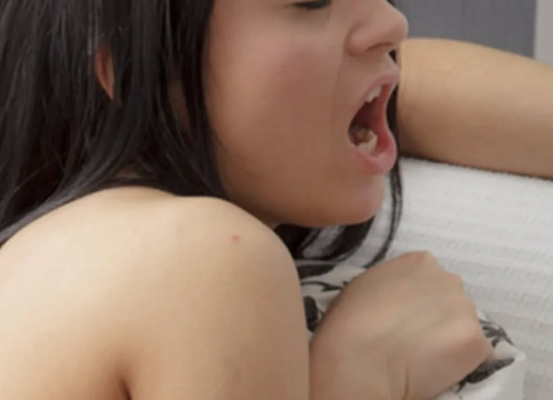
Barefaced and Bold: Sydney Sweeney and the Ritual of Looking Twice
It started with a selfie.
Sydney Sweeney, the 27-year-old actress known for her roles in Euphoria and The White Lotus, posted a photo of herself in a bathrobe and headband, her face free of foundation, contour, or glam. The lighting was soft. Her expression, unguarded. It was the kind of image meant to feel intimate, real, unfiltered.
But the internet blinked—and then stared.
Within hours, the photo became a battleground. Critics dissected her features, questioned her beauty, and accused her of performative vulnerability. Some called her “plain.” Others claimed she was “only hot with makeup.” A few went further, suggesting she was “a pick-me girl” trying to manipulate public perception.
And then, something shifted.
Fans—especially women—began to push back. They flooded comment sections with praise, solidarity, and their own barefaced selfies. They reframed the moment. They turned scrutiny into sanctuary.
This was the moment we all looked twice.
🎭 The Theater of the Face
The human face is a canvas of identity. It’s where we perform beauty, gender, age, mood. It’s where we negotiate visibility and vulnerability. And when a public figure like Sweeney chooses to strip away the mask—literally—it becomes a ritual of risk.
“No-makeup” photos aren’t just aesthetic choices. They’re statements. Invitations. Sometimes provocations.
And in Sweeney’s case, they became a mirror. Not just of her face, but of our collective discomfort with authenticity.
🧠 The Psychology of Scrutiny
Why did this photo provoke such intense reactions?
Because it disrupted the script.
Sweeney is often framed as a beauty icon—blonde, glamorous, hyper-feminine. Her Armani Beauty campaigns and red carpet appearances reinforce that image. So when she appeared barefaced, the contrast felt jarring. For some, it was disappointing. For others, threatening.
Psychologists call this “expectancy violation.” When someone defies our mental template, we react—sometimes with curiosity, sometimes with criticism.
But beneath that reaction is something deeper: a fear of ambiguity. A discomfort with the idea that beauty can be both constructed and real. That vulnerability can be both sincere and strategic.
🔥 Reframing the Headline
The headline reads: “Sydney Sweeney Faces Scrutiny Over ‘No-Makeup’ Photos.”
But what if we reframed it?
- “Sydney Sweeney Dares to Be Seen”
- “The Face That Asked Us to Look Twice”
- “Barefaced, Not Broken”
This is the art of co-titling. It’s not just about changing the words—it’s about changing the lens. About turning spectacle into story. About inviting others to participate in the meaning-making.
Because this wasn’t just a celebrity moment—it was a communal mirror.
🕊️ The Fan Response: A Ritual of Solidarity
What made this moment powerful wasn’t the backlash—it was the response.
Fans didn’t just defend Sweeney. They joined her. They posted their own no-makeup photos. They shared stories of insecurity, self-acceptance, and beauty rituals. They turned the comment section into a confessional. A chorus. A ritual.
One user wrote: “I used to hate my bare face. But seeing Sydney like this makes me feel seen.”
Another said: “She’s not trying to be perfect. She’s trying to be real. And that’s beautiful.”
These responses weren’t just supportive—they were transformative. They reframed the moment from critique to communion.
📸 The Image That Froze the Moment
There’s a photo from the Harper’s Bazaar shoot—black and white, minimal makeup, Sweeney’s gaze direct but soft. It’s the kind of image that demands a second look.
Not because it’s dramatic—but because it’s true. It holds vulnerability and strength in equal measure. It invites us to feel, to name, to respond.
What would you title it?
- “The Face That Doesn’t Flinch”
- “Softness as Strength”
- “We All Look Like This Sometimes”
Each title reframes the moment. Each one invites a different emotional response. That’s the power of communal storytelling.
🌒 The Layers Beneath the Glam
Sweeney has spoken openly about her beauty journey. As a teenager, she struggled with makeup. Her early attempts left her orange-faced and powder-caked. She didn’t wear makeup until she moved to LA. She learned from her makeup artist, Melissa Hernandez, who she calls “my saint.”
These details matter. They remind us that beauty is learned, layered, lived. That even icons have awkward phases, insecurities, rituals.
And when Sweeney chooses to show her bare face, she’s not rejecting beauty—she’s expanding it. She’s saying: This is part of the story too.
🧵 Weaving the Threads
So what do we do with this moment?
We name it. We reflect on it. We resist the urge to flatten it into a meme or a headline.
Instead, we ask:
- What does it mean to be seen without armor?
- What does it mean to be beautiful without permission?
- What does it mean to respond with softness instead of scorn?
These questions turn rupture into ritual. They invite healing. They invite depth.
💬 Invitation to Co-Title
Let’s not end here.
Let’s invite others to co-title this moment. To share their interpretations. To name what they saw, what they felt, what they questioned.
Here are a few prompts:
- What did this moment reveal about your own relationship with beauty?
- How do you navigate the tension between authenticity and expectation?
- What’s your version of “barefaced and bold”?
Because in naming, we reclaim. In reflection, we connect.

